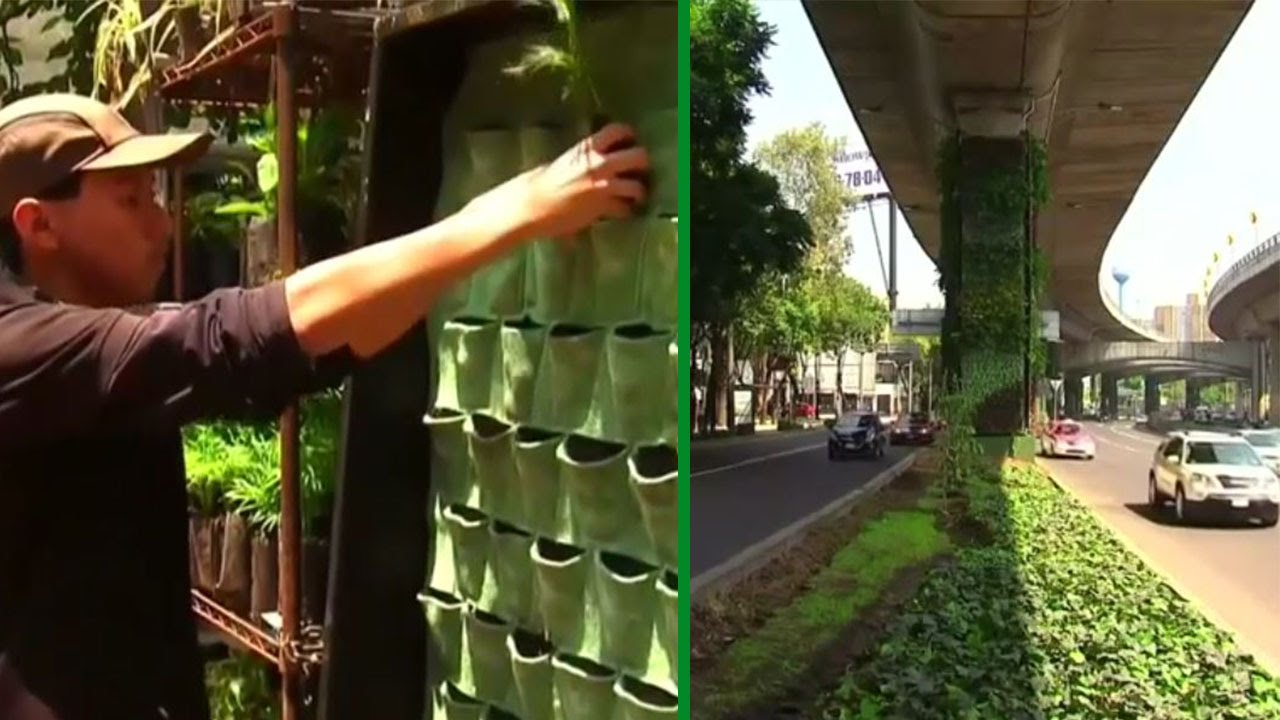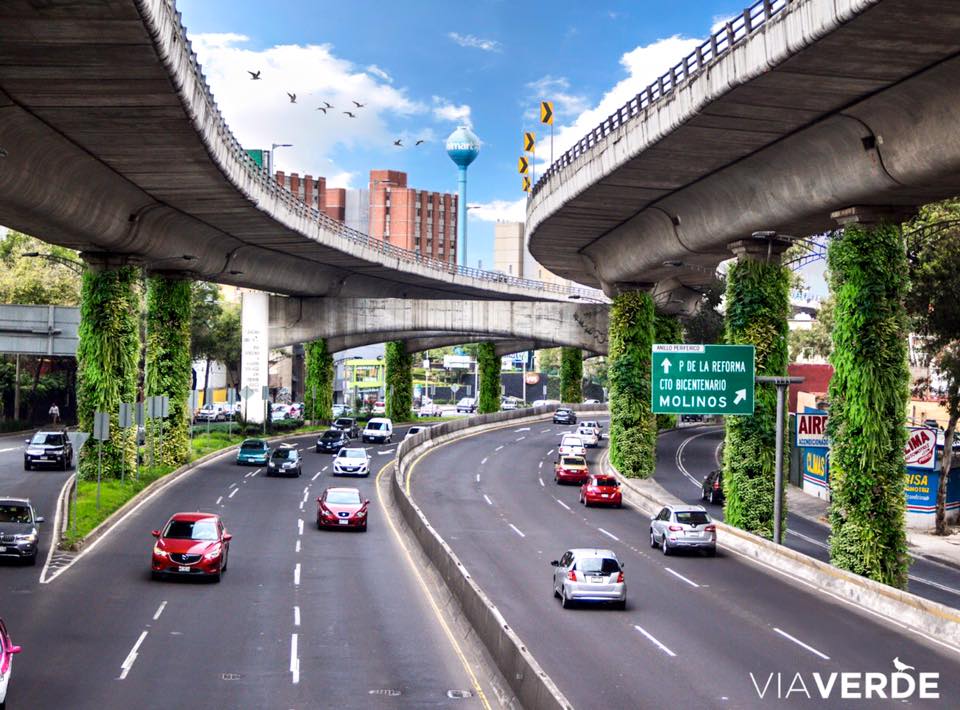
- Sustainable Planet -
- 3mins -
- 2,684 views
Mexico City is fighting air pollution by transforming its highway pillars into vertical gardens
As part of the Via Verde Project this citizen-led initiative aims to fight pollution, help beautify the city and decrease motorists’ stress levels.
The Via Verde Project: Mexico City’s Vertical Gardens
The Via Verde project in Mexico City aims to turn 1,000 highway pillars into vertical gardens. A variety of plants are placed inside "pockets" of felt to make the city greener and its air cleaner. A hydroponic system collects rainwater to cover its needs and each garden is equipped with sensors to allow remote monitoring.
More than 40,000 m2 of vertical gardens will cover more than 700 concrete columns
A community initiated project in Mexico city will turn hundreds of columns supporting an elevated motorway into an interconnected vertical garden. Spanning 27 kilometres in total, research suggests that when finished it will filter 27,000 tonnes of gas, provide clean oxygen for 25,000 citizens, and have created hundreds of jobs through design, installation and maintenance.
The design studio behind the project, Via Verde, has realised over 400 projects, bringing more than 30,000m2 of extra green space to Mexican cities, making them one of the most well established businesses in the industry.
The initiative came about because of problems faced in the city regarding poor air quality, since there is too much pollution which then leads to illness among the population.
The project includes the installation and maintenance of more than 40,000 m2 of vertical gardens in more than 700 columns on the second floor of the ringway, which would generate multiple environmental benefits for residents, plus positively change the urban image of one of the busiest roads of Mexico City.
VÍA VERDE aims to produce enough oxygen for more than 25,000 citizens, in addition to filtering more than 27,000 tons of harmful gases, capturing more than 5,000 kg of suspended powders and process more than 10,000 kg of heavy metals per year.
Source: MexicoNewsNetwork

The project is not without its critics
Despite the best intentions of those behind the project, Via Verde has prompted different opinions and criticisms, reports UrbanizeHub.
Firstly, the branding of the project as a public space is not entirely true as it does not engage or empower citizens and it does not tackle or reduce car use.
The dominant trend in urban regeneration is to benefit cyclists and pedestrians. The lack of citizen-empowering behind this project could be an obstacle for Mexico’s green agenda if the city’s goal is to become a world leader in this sector
Additionally, critics think the project is not cheap and that the money could be used more wisely. For instance, a picture showing similar prices between building one Via Verde column and 300 trees has become viral.
The picture suggests the creation of “real” green spaces,instead, for a similar cost. Other opinions, also suggest that the project does not tackle high noise levels or that 80.000 signatures are not enough for a city with 20 million inhabitants.
Via Verde is trying to repurpose existing infrastructure in order to create green areas. However, the project has instead created a controversial debate on how useful or beneficial such a plan actually is.
Source: UrbanizeHub


